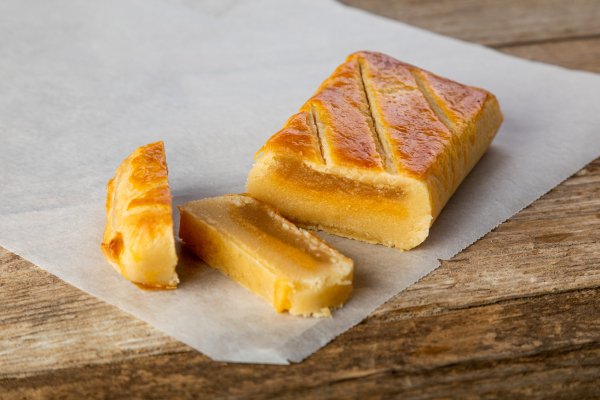Quick bite
into history
The sweets from Cádiz taste like a tradition. They are born as a result of a perfect mix of cultures, scented with sugar syrup, honey, almond and ajonjolí (sesame): these are authentic quick bites into history. In their flavours we may find a latent footprint of their Arab origin, especially in the typical Christmas sweets. They’re parenthesis in time, a step backwards, where quality and passion for homemade taste reign together.
Sweets from Cádiz have a distinctive mark of origin in their taste. The most emblematic recipes of its pastry have been transmitted from generation to generation and continue and be elaborated nowadays with natural ingredients and crafted completely by hand.
Among the most typical sweets we can highlight the traditional Medina Sidonia Alfajor, guaranteed by the EU’s protected geographical indication (PGI). Originally called alajú, it’s made with honey, almonds, hazelnut, flour, breadcrumbs and spices.

It has a toasted colour when cut, with a spicy aroma and a very original taste, reminiscent of nuts and honey. It’s healthy and delicious and has got a great personality. It’s shaped like a thread and is presented in individual pieces wrapped in paper of different weights and sizes. They’re usually part of Christmas sweets, although their consumption tends to expand to other seasons.
PGI Alfajor de Medina Sidonia
Another peculiar sweet is Pan or Turrón de Cádiz. It’s a marzipan sweet filled with bits of candied fruits and cabello de ángel (sweet pumpkin) with a special form that looks like a chest. Its origin is attributed to the French invasion that, at the beginning of the 19th century, kept the city of Cádiz under siege for a long period of time, causing food supply problems for the population. This forced its inhabitants to use the almond stored in customs for the overseas colonies, elaborating this product.
Alongside with pestiños – another Arab tradition, made with flour dough, fried in olive oil and passed through honey, they form part of the so-called “pan fruits” or “fried foods”. They’re the most typical Christmas sweets of the Cádiz capital.
Apart from the above-mentioned sweets, the province has a rich and varied pastry tradition with some specialties in most of its towns. Tortas, roscos (donuts), mantecados, polvorones, yemas (sweet yolks), cinnamon crusts, torrijas (type of French toasts), sponge cakes, and so on and so forth.
Bakeries in Cádiz innovate without leaving the tradition aside, in order to give the typical sweet an increasingly modern and international flavour. For example, the traditional almond teja (petit four) has given way to a wide variety: coconut, chocolate, pine nuts and, the newest ones, gluten-free and sugar-free. In addition, chocolate and candies of excellent quality and original presentation have appeared on the market and are now finding a place in some of the most exclusive shops in Europe.

